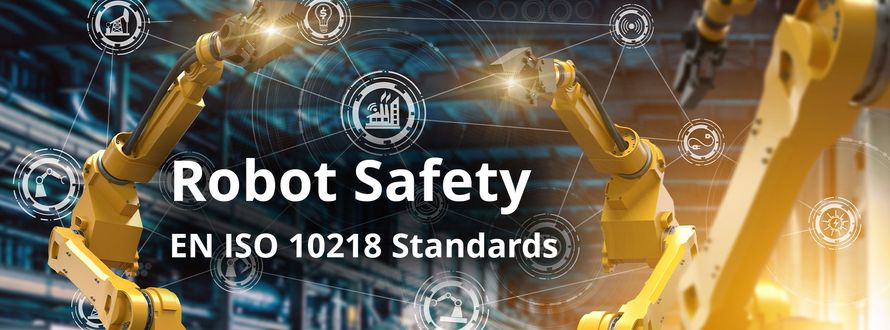In the ever-evolving world of industrial automation, safety is no longer a static concern—it is a dynamic engineering challenge. As collaborative robots (cobots), AI-enabled systems, and distributed architectures redefine factory floors, the standards that ensure human and machine can coexist safely must evolve in lockstep. The 2025 revision of EN ISO 10218 is a key part of robotic safety legislation. It has been updated to reflect modern realities and future demands.
Understanding EN ISO 10218 and the 2025 Revision
EN ISO 10218 is the internationally recognized standard for the safety of industrial robots. Originally split into two parts—Part 1 addressing robot manufacturers and Part 2 guiding system integrators—it has long been the benchmark for certifying robot safety in design, integration, and deployment. However, since the last major revision in 2011, the robotics landscape has drastically changed.
The 2025 update, published in February, represents a major leap forward. It brings clarity, stronger safety definitions, and new responsibilities for manufacturers and integrators alike. Notably, the revision includes clearer classification of robot types (Class 1 for inherently low-risk robots and Class 2 for traditional industrial robots), detailed functional safety modes, and stricter design requirements for managing dynamic loads. There is also an important integration of collaborative robot requirements—once covered by ISO/TS 15066—into ISO 10218-2 itself, giving manufacturers a single authoritative source for cobot compliance.
Additionally, the standard now incorporates cybersecurity considerations, recognizing that digital threats can have physical consequences in modern robotic systems. These new requirements encourage more robust architectures that can withstand both software bugs and malicious attacks—especially in an era where robots are increasingly networked, remote-managed, and software-driven.
Key Challenges for Industry Players
While these updates enhance safety and alignment with modern use cases, they also raise the bar for compliance. For robot OEMs (Original Equipment Manufacturer), this means redesigning hardware to accommodate new safety factors, such as forces exerted during dynamic movement or collisions. Functional safety requirements must now explicitly map out defined performance levels (PL, according to ISO 13849‑1) or safety integrity levels (SIL, according to IEC 62061), particularly for Class 2 robots, where PL d / SIL 2 is the expected minimum.
System integrators, on the other hand, face the task of adapting entire robotic cells to new standards. ISO 10218-2:2025 now includes hundreds of pages of detailed requirements and annexes. It covers everything from safe zone setup to gripper coordination, and introduces formal expectations around system documentation, user manuals, and intended use statements.
Perhaps one of the most far-reaching challenges is the legal and liability implication. With clearer definitions and classifications, it will be easier to determine who is responsible in the event of an incident—manufacturer, integrator, or end-user. This puts added pressure on organizations to ensure thorough and demonstrable compliance.
How SYSGO and NexCOBOT streamline Compliance
In this complex landscape, companies like SYSGO and NexCOBOT offer a lifeline. Their integrated solution is designed to not only meet but simplify compliance with the 2025 edition of EN ISO 10218. At the heart of this approach is SYSGO’s PikeOS, a real-time operating system (RTOS) and hypervisor built for functional safety and cybersecurity, paired with NexCOBOT’s SCB100 safety controller platform.
PikeOS brings a powerful advantage: time and space partitioning. This allows developers to run mixed-criticality applications—such as safety logic, diagnostics, and AI-driven control—in isolated partitions on the same hardware. With Common Criteria EAL 5+ certification and support for Safety Integrity Level 2 (SIL 2) and above, it is ideally suited for meeting the performance level requirements laid out in ISO 10218.
The SCB100 hardware platform complements this with a robust, compact controller built around Intel’s Atom x6427FE, with integrated functional safety features and pre-certified support for FSoE (FailSafe over EtherCAT). It has already been qualified under standards like IEC 61508 (Functional Safety of Electrical/Electronic/Programmable Electronic Safety-related Systems (E/E/PE, or E/E/PES)) and ISO 13849 (safety-related parts of control systems (SRP/CS)), and its modular design makes it suitable for everything from traditional industrial robots to collaborative systems.
Together, these solutions form a certifiable platform that enables manufacturers to focus on application-level innovation without being bogged down by the complexities of compliance. More importantly, they allow companies to build systems that are both safe and future-ready.
Future Outlook: Where the Industry is heading
With the 2025 standard now in effect, companies have time until 2027 to fully transition. During this time, we expect to see not only redesigns but also a complete change in how safety is built into and recorded throughout the development process.
The ISO committee is also preparing ISO/TR 10218-3, a technical report that will offer implementation guidance for the new standard. This should help ease the transition for developers and reduce the learning curve for integrators.
Looking even further ahead, robot safety will likely merge more deeply with cybersecurity, especially as intelligent edge devices and AI-driven behavior become standard. There is also a growing interest in certifiable modular platforms, which can reduce time-to-market and development costs dramatically. In this respect, SYSGO and NexCOBOT’s strategy appears not only aligned with today’s needs—but with tomorrow’s requirements as well.
Conclusion
The 2025 revision of EN ISO 10218 is not just a regulatory update; it is a recognition of how far robotics has come—and how much further it will go. By providing clearer definitions, tighter safety classifications, and a more comprehensive approach to risk, the new standard creates a safer, more predictable environment for both humans and machines.
For companies navigating these new waters, adopting a certified and integrated platform like SYSGO’s PikeOS with NexCOBOT’s SCB100 can drastically reduce development effort, streamline compliance, and create future-proof foundations for innovation.
The path to compliance may be complex—but with the right tools and partnerships, it can also be an opportunity to lead in the next era of intelligent, safe, and collaborative automation.

